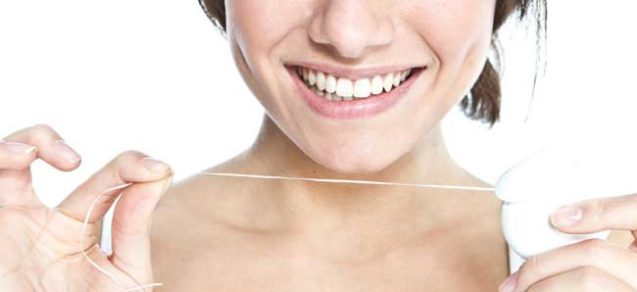As the holiday season continues in full effect, a lot of people get in the mood for giving. With Thanksgiving just over, you probably ate so much that you envy cows and their four stomachs. But before you delve into eggnog, cookies, prime rib, and fruitcake (Well, we aren’t sure anyone has eaten fruitcake in the last two decades, but it’s synonymous with the holidays, so…), you should consider donating to a charity. With so many charities to choose from, it can be hard to make a decision on what cause you want to be apart of. Below are a few charities that focus on dental needs.
- National Children’s Oral Health Foundation (NCOHF) – Through various programs and initiatives, NCOHF aims to helps children of all ages by educating them on preventative oral care, as well as providing oral health products to those in need. Since the NCOHF gets funding from bigger partnerships, all donations made go directly to the programs and not administrative or fundraising efforts.
- Dental Lifeline Network (DLN) – DLN provides the less fortunate with dental services by organizing the logistics for volunteer dentists and labs. DLN has an agreement with dentists that they will do at least one to two cases per year. While most low-income dental clinics provide only basic or emergency services, DLN is proud to have dentists who perform extensive dentistry for low-income and disabled/elderly people.
- Global Dental Relief (GDR) – GDR gives children in impoverished areas around the world much-needed oral care, and also educates them on how to properly to take care of their teeth. They organize multiple relief trips a year to Nepal, India, Guatemala, Kenya and Cambodia.
If these charities aren’t tugging on your (golden) heart strings, check out Just Give to find one that may persuade you to donate or volunteer. Just Give allows you to search for local charities — that way you know the money or time you’re donating is going back into your community. Additionally if you don’t know much about a charity, visit Charity Navigator. Charity Navigator rates non-profit organizations on financial efficiency and transparency. Before donating to a charity you like, be sure to check out if the organization is of high quality or not.
As we continue to enjoy our holiday season with family, friends, and loved ones, please take the time to look into a charity that resonates with you. It only takes a little bit of your time and effort to make someone else’s year.
More
What You Need To Know:
The Effect Diabetes Has On Oral Health
Diabetes affects every aspect of your life. From ensuring your blood sugar is at the right level to keeping up with regular exercise, managing diabetes is no easy task. You must be aware of many complications that can arise from diabetes, and your oral health is no exception. Since it’s National Diabetes Month, we have provided information and tips to consider regarding the relationship between diabetes and your oral health.
According to the Centers for Disease Control, 29.1 million Americans have diabetes—and 8.1 million of those do not know they have the disease. If you’re not sure if you might have diabetes, the first step to taking care of your body is finding out if that’s the case. Some common symptoms of diabetes include:
- Blurred vision
- Hunger and fatigue
- Peeing more frequently while also being thirstier
- Dry mouth and itchy skin
More symptoms that can indicate longer term damage caused by diabetes include:
- Yeast Infections (for both genders)
- Pain or numbness in your legs and feet
- Cuts or sores that heal slowly
If you are experiencing these symptoms, go see your physician and get tested for diabetes. For your oral health, the symptoms take a while longer to show that actual damage that is occurring in your mouth if left untreated. Keep notice for symptoms like:
- Puffy, swollen gums that bleed when brushed or flossed
- Loose teeth
- Bad breath
- Receding gums
These are all signs of gingivitis, which if left untreated, can turn into periodontitis.
How does diabetes contribute to gum disease?
There are a few major ways diabetes affects your mouth. First, if your blood sugar levels are left unchecked, the glucose level of your saliva rises. Glucose is a type of sugar, and bacteria loves sugar, which will speed up the progress of gum disease. Second, with diabetes, your blood vessels thicken, making it harder for them to deliver oxygen and nutrients, as well as to take away waste. Lastly, a symptom of diabetes is dry mouth. Saliva helps keep the bacteria from sticking to your teeth, and a lack of saliva makes it easier for plaque and tartar to develop.
How do I prevent gum disease caused by diabetes?
- Control your blood sugar levels. This is done in many ways, such as taking insulin injections, eating different foods, exercising, and visiting your physician regularly.
- Brush and floss every day — This advice may seem obvious, but it’s tried and true. Removing plaque from your gumline and stimulating your gums are an excellent way to prevent gum disease.
- Visit your dentist for teeth cleanings — If you don’t have signs of gum disease yet, stay up to date on your regular teeth cleaning every six months. If you do have gingivitis or periodontal disease, a deeper clean will be required to prevent further tooth damage.
Whether you have diabetes or not, it is still very important to take care of your mouth. Recent studies have shown that not only are people with diabetes more likely to be afflicted by periodontal disease, but people with periodontal disease are more susceptible to getting diabetes as well.
While diabetes and periodontal disease can affect your quality of life, if treated early and often, you can mitigate much damage caused by these diseases. Call (661) 952-7865 to see how we can help today.
Sources:
http://www.diabetes.org/living-with-diabetes/treatment-and-care/oral-health-and-hygiene/diabetes-and-oral-health.html
http://www.diabetes.org/living-with-diabetes/treatment-and-care/oral-health-and-hygiene/warning-signs.html
http://www.mouthhealthy.org/en/az-topics/d/diabetes
More
By admin
01 Nov, 2016
Dental Health, Dental Tips, General Dentistry, General Health, Lifestyle, Oral Health, Preventive Dental Care
flossing, flossing alternatives, interdental brushes, waterpik
Flossing: In or Out?
It’s been six months since your last teeth cleaning. You arrive at your appointment and get called to head to the back by your hygienist. As she begins cleaning your teeth, she asks the question we all dread. “How often do you floss?” If you’re like many people, you might stretch the truth, or justify telling a white lie since you DID use a toothpick after dinner a few nights back.
Maybe now—lucky you!–you won’t have to answer that question any longer. Just recently the USDA and Department of Health and Human Services stated that flossing has been not been proven to be effective, and removed it from their dietary guidelines.
Well, slow down, my friend. You’re not off the hook just yet.
While this bold statement is technically true, there are still a few things to consider. First, the guidelines don’t say that flossing is bad or ineffective; they’re just saying there isn’t enough evidence in studies to prove it does help. The difference may feel like a matter of semantics, so for your own peace of mind, ask any dentist if you should floss. But you probably already know what their answer will be.
Your teeth consist of five surfaces, and brushing your teeth will hit all but two. Flossing will take care of the two remaining surfaces (the surfaces between your teeth) and ensure that plaque does not become tartar, which eats away at your teeth and gums. While flossing can help prevent tooth decay, a study by the Central for Disease Control shows that only 30% of the U.S. population flosses daily.
If you’re one of the 70% of people who don’t floss daily, you should know there are many alternatives to floss out there that can be just as effective in cleaning between your teeth.
Interdental Brushes – These are little brushes that you used to brush in between your teeth. People find these much easier to use than floss, and are good for people who have braces or larger gaps between their teeth.
Waterpik – The waterpik shoots a small, strong stream of water that can fit between small crevices in your teeth. It’s great to use for washing away plaque that can gather in pockets, but can take more time to master than floss or interdental brushes.
Floss Picks – A floss pick is a small piece of floss attached to a handle. These have become popular in recent times due to how convenient they are to use, but there are a few things to consider when using them. Since the floss is attached to a handle, manipulating the floss to hit all of the surfaces of your teeth can be difficult. Additionally, the recommended amount of floss to be used in a session is 12-18 inches, and the typical floss pick is only about two inches. Consider using more than one floss pick per session.
Regardless of what technique you use to clean between your teeth, the overall consensus is that anything is better than nothing.
Have a difficult time flossing every day? Start by doing it three times a week. Flossing takes time and doesn’t give immediate results, but think of it as an investment in your mouth’s future.
If you have any concerns about flossing, reach out to your Lancaster, CA dentist today. Just think about how good it will feel to tell your dentist and hygienist that you’ve been consistently cleaning in between your teeth!
More

The weather is finally turning, and you only have a couple of months left to get the most out of your yearly dental insurance. Visiting the dentist may not be on your annual to-do list, but it is key to maintaining optimal oral health. With the holidays — and all of those treats and sweets — on the horizon, now is the perfect time to prepare and protect your pearly whites so you can enjoy the celebratory season that lies ahead.
Why Wait?
Along with dental benefits, FSA (Flexible Spending Account) and HSA (Health Saving Account) benefits expire at the end of the year. If you haven’t met your yearly maximum, the remaining amount likely won’t roll over into the next year, and you’ll lose your opportunity to make the most of those dollars. Also, if your insurance plan includes a deductible you’ve already met, it only makes sense to reap the full value of your insurance now, before the next plan year, when you have to meet the deductible again.
Benefiting From Your Benefits
Taking advantage of your unused benefits could save you hundreds of dollars. Routine dental exams can prevent oral conditions that are costly to correct. There is also a good chance the cost of your dental insurance will increase in the new year. Remember, you’re paying for your insurance, so getting the most out of it at its current price just makes sense.
What Can I Use My Benefits For?
If you are not experiencing an oral health emergency, a preventive approach to your oral health will save you money and discomfort down the road. Scheduling a regular visit with your dentist gives them an opportunity to protect and fortify your teeth against any health threats. They can also identify early signs of decay or emerging periodontal disease. When caught in the early stages, the effects of both of these conditions can be stopped and, in some cases, reversed.
Consider These Treatments
If you don’t need extensive work, consider using your remaining insurance benefits for the following:
- Cleanings
- Fluoride treatments
- Sealants
- Periodontics
To find out more about how you can get the most out of your dental insurance plan, call (661) 952-7865 today and talk to one of our professionals. We will help you figure out how you can maximize your oral health and maintain your beautiful smile.
More

Four Rare and Interesting Dental Anomalies
Everyone knows the saying, “Curiosity killed the cat.” Do cats have a saying for us? If they could talk, it would be along the line of, “Curiosity drives humans crazy until they find out what they’re looking for.”
In the dental world, there are many fascinating cases and conditions to find out about. Here are four dental oddities that will more than satisfy your curiosity for the time being.
1. Tooth Fusion
Teeth fusion happens when two separate teeth combine to become one bigger tooth. The teeth start out as two tooth buds, but join into one tooth above the gum. Other than the slightly bigger look of the tooth, you can also notice tooth fusion when the person has one less tooth than they should.
2. Concrescence
Concrescence, similar to fusion, takes place when two teeth join; however, in this case, the cementum, which covers the roots of your teeth, fuses below the gum. Appearance-wise, the teeth look normal, but underneath the gums the roots are joined together. Anomalies like concrescence demonstrate why x-rays are very important. If one tooth needs to be extracted, but it is affected by concrescence, your dentist will need to perform surgery to separate the two teeth.
While there are no health-critical issues involved with concrescence and fusion, your dentist should be aware of them and monitor them for cavities and other dental issues.
3. Hereditary Gingival Fibromatosis
This condition’s name may be long, but thankfully it is a rare dental issue, affecting only one in 175,000 people. Hereditary Gingival Fibromatosis (HGF) occurs when your gums overgrow your teeth. There are varying degrees of HGF, but common symptoms include abnormal tooth movement as well as difficulties chewing and speaking. While HGF is not a life-threatening condition, it does need to be treated to improve quality of life.
4. Shark Teeth
Shark teeth are actually more common than you’d think. They happen when children’s permanent teeth grow in before their primary (baby) teeth have fallen out, resulting in two layers of teeth, like a shark. Typically, shark teeth go away on their own. You just have to be patient and wait for the child’s body to do the work.
However, if the permanent teeth have fully grown in, and the baby teeth have yet to fall out, the tooth roots may not dissolve on their own. If the teeth get to this point, contact your Lancaster, CA dentist to extract the baby teeth.
If you or someone you know is affected by any of these dental rarities, there’s usually no need to worry. These conditions (except for HGF) most commonly happen to primary teeth, and the best thing you can do to address them is to go to your dentist for regular check-ups.
Resources:
http://www.ncbi.nlm.nih.gov/pmc/articles/PMC3354801/
https://dentistry.umkc.edu/Practicing_Communities/asset/AbnormalitiesofTeeth.pdf
http://oasisdiscussions.ca/2015/07/30/fctg/
More





